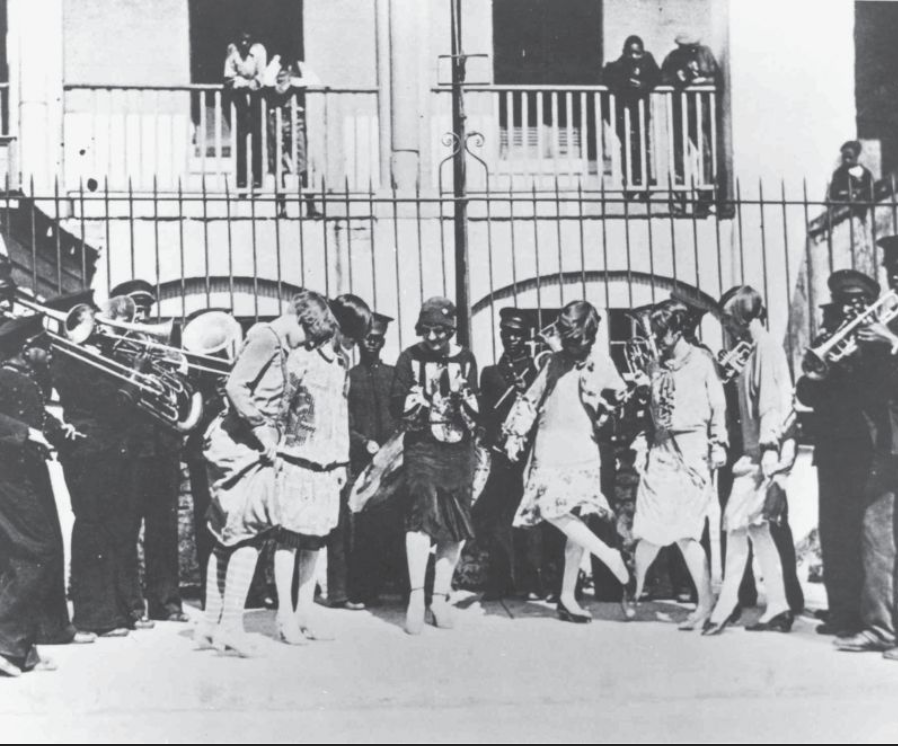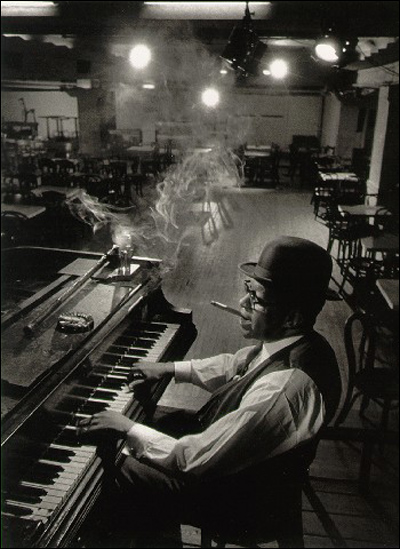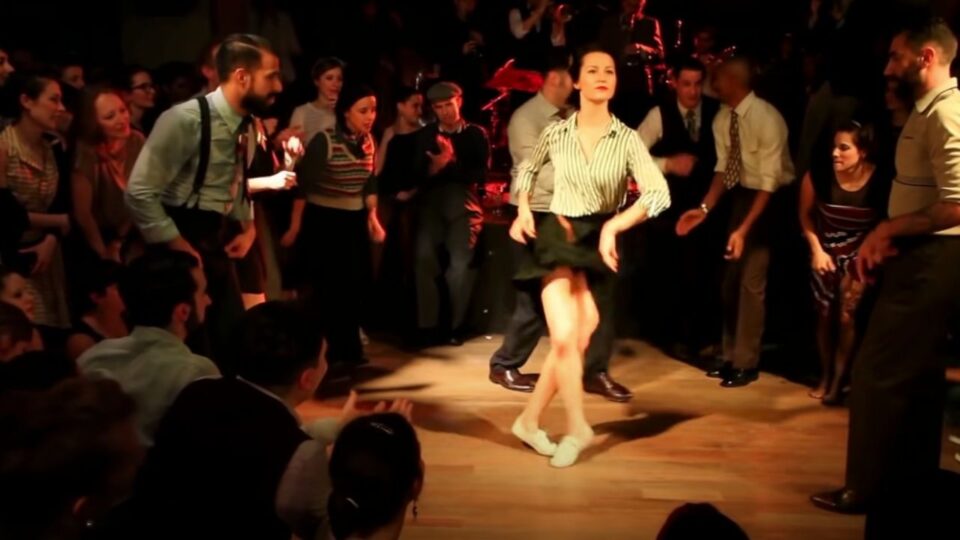Any of us that dance swing surely love the Charleston dance! But so few of us know the history, where the dance originated. Although we all have an image of white rich flapper girls, dancing the charleston, smoking cigarettes and smiling on screen, do we really know who invented the first steps that came to be The Charleston dance? How did the dance come to be? And how did it get its name? Why are there so few images of Black Charleston dancers? I can tell you now, it may not be as simple as it was named after the city and popularised by flappers. Here I hope to answer some of those questions. Come take the journey to understanding the rich past of this dance form.
The Charleston dance belongs to the family of African-American vernacular dances. More specifically it is an authentic jazz dance as it was done to jazz music (“hot jazz” and originally the ragtime) combining elements derived from improvised African dance moves with syncopated jazz rhythms.
1800’s – Juba dance as the early origin of the Charleston
Enslaved Africans brought it (The Charleston dance) from Kongo to Charleston, South Carolina, as the Juba dance, which then slowly evolved into what is now known as Charleston. (…) In African, however, the dance is called Juba or the Djouba. The name Charleston was given to the Juba dance by Europeans much later when they came to America
Africanisms in American Culture, p.52
The Juba dance or hambone , originally known as Pattin’ Juba, is an African American style of dance. This one-legged sembuka step, over-and-cross, arrived in Charleston between 1735 – 1740. It involves “patting” (“Pattin’ Juba”) stamping, slapping the chest and arms and clapping. While Juba is a word used for songs sung in plantations.
Even in the 18th century the Juba dance (today known as Charleston) was so popular that a premium was placed on black domestics who would be good Juba dancers to teach the lady of the house some steps.
“Geechie” steps Gullah culture as the origins of the Charleston dance
There are so many amazing stories of the origins of the Charleston dance. In my research I had to check and double check to see which might be the right one. However, as anyone digging into history knows, there is always some subjectivity as to what is “the truth”, so here are all the sources I could find.
According to Frankie Manning, from the book “Ambassador of Lindy Hop”, the Charleston may have been based on a step called Jay – Bird, and is said to have originated in South Carolina, Charleston, where it was sighted in 1903.
So what happened in South Carolina, Charleston? In 1891, In Charleston, South Carolina, the Reverend Daniel Jenkins, pastor of a small African – American church, founded an orphanage for African – American children – Jenkins Orphanage.

In order to face the financial issues and needs of the kids, he set up a brass band. At that time the Jenkins Orphanage band was mainly performing Gullah, or as it was called geechee music. True to tradition the band featured young dancers, who performed “geechie” steps in front of the band, as if conducting the musicians.
Many scholars believe that the Jenkins Orphanage Band is responsible for the national spread of the Gullah inspired Charleston steps while they were travelling to raise the money.
The Gullah/Geechee people are descendants of west Africans, rice growing tribes, who were enslaved and brought to the sea islands because of their expertise in the rice growing traditions. They were brought to live in North Carolina all the way down to Florida, but primarily in South Carolina, sea islands.
There are a few stories that tells us who was the inventor of the Charleston step.
Story I – boys from Charleston Jenkins Band
Professor Jacky Malone in Steppin on the Blues tells us about a street and cabaret dancer Russel Brown. He was best known for “Geechie dance” that was later called ” The Charleston”. She quotes the jazz pianist Willie Smith (“The Lion”), who fully attributes the spread of Charleston to the Gullah/Geechee culture and the boys from Jenkins Orphanage.
Willie Smith recollects that people in Harlem would holler when they’d see Russel Brown dance: “Hey Charleston, do your Geechie dance”.
Some folks say that is how the Charleston got its name. I am a tough man for facts and I say the Geechie dance had been in New York for many years before Brown showed up. The kids from the Jenkins Orphanage Band in Charleston used to do Geechie steps when they were in New York on their yearly tour
Willie Smith (Steppin’ on the Blues, p.85)
It is interesting to mention that Gullah is the most authentic African culture in America. In the Gullah culture, music was not separated from the dance it accompanied. The unique rhythms and accompanying dance rituals of Gullah culture were often taken over by Charleston’s early jazz and ragtime musicians.
Story II – Russel Brown, musician of Jenkins Band
We find a similar story about the orphan boy dancing Geechie steps in author’s Mark Knowles book “The Wicked Waltz and Other Scandalous Dances”. The only difference is that Russel Brown is mentioned as a musician, and a member of Jenkins Orphanage Band.
Story III – Dan White & southern dancers at The Jungles Casino
Mark Knowles as well quotes John P. Johnson, the composer of “The Charleston” tune. Johnson says that he saw the Gullah dances in The Jungles Casino in 1913 where he was playing. Majority of dancers were from South Carolina, Charleston. The best of all on the dance floor, was Dan White, recollects Johnson. He was the one to introduce The Charleston step as we know it. Johnson says that he composed his famous Charleston tunes while watching Southern dancers jamming.
Story IV – Russel Brooks from Charleston
There is an audio documentation of how Willie “The Lion” Smith tells a story about Charleston. One day himself, Jamie Johnson (presumably John P. Johnson) and Fats saw a little guy, they called him Russel Brooks. Brooks was a dancer from Charleston. He used to dance on the streets and cafes for quarters. “Jamie said, I think I’ll write a dance for him, Lion, and we will call it The Charleston”. He mentions that the “geechies” they come from North Carolina and “they can dance”. Following the story Willie “The Lion” plays “the Charleston” tune.
This piece is from his 1958 “The Legend of Willie The Lion Smith” LP, produced by Grand Award Record Group.
Story V – The Charleston, Herman Brown’s dance
Also we find an interesting, slightly different angle on the story about the spread of Charleston in Alphonso Brown’s book “ A Gullah Guide to Charleston”. He writes about Herman Brown, a boy who brought the dance from Charleston to Harlem. “The dance is known now as The Charleston, Herman Brown’s dance”.
Brown writes how once touring in New York John P. Johnson taught the boys from Jenkins Band his tune “The Charleston” from popular Broadway show “Runnin’ Wild” and the moves that went along with it. Upon returning from New York The Jenkins Band would play the new ragtime music and do the steps. White ladies would come along and imitate the moves.

We can only collect as many stories and memories as we can to build a more complete picture of how the history of the Charleston dance. What we know now is that the Charleston dance swept the world up in a frenzy of wild dancing.
Here is a excerpt from the Jenkins Orphanage Band performing. You can see the boy doing the early Charleston, “geechie” dance. You can watch the full video here.
1920s – The Charleston on stage and film
In the early 20s the Charleston dance turned into a popular American craze, a distinctive, maybe stereotyped, feature of the Jazz Age, the flappers and the era of Prohibitionism. As we discovered above, the dance would have been performed in many nightclubs and streets of New York. Still it was said to have been “officially” presented in the all-Black Broadway show Runnin’ Wild (1923). The show was one of the earlier Arfican – American Broadway successes. There it was danced to the hit song “The Charleston” by the Black American composer James P. Johnson.
In 1925 an African American performer Josephine Baker introduced the Charleston dance in Europe during her Parisian tour “Le revue negre”. Short after the Charleston dance soon became international craze.
Later in 1928 Joan Crawford paid a tribute to the Charleston in a film “Our Dancing daughters”. The Charleston was the all favourite dance to watch and to do.
Conclusion
It is hard to find a full objective story of the Charleston dance. The history of it may be far richer than we know. We can only trace it back as much as we have sources to look into.
Which leads to me this amazing quote by Cholly Atkins. He is talking about the origins of the Charleston dance in his book “Class Act”:
(..) Charleston step (…) We think it came up from South Carolina with its name intact and was introduced in a Broadway show, Running’ Wild. That’s what I was always told. But see, this thing is really complex because of all the interweaving and overlapping that happened. There was so much cross fertilisation from one venue to another – from the street , to the theatre, to the dance hall, to the nightclub. /…/ All of those dances came right out of the authentic jazz and were choreographed for stage
The Charleston dance as many other authentic and vernacular jazz dances is rooted in African tradition. It evolved through time, changed depending on who performed it and where, and by how it was presented on stage and film.
Yet due to little or no documentation of black Charleston dancers, the commonly known image connected to the Charleston dance is a white flapper girl. Though it does not present a full picture. Either through destruction, non documentation or deliberate white washing these recordings are sadly not with us. Hence we must fill in the gaps.
For my part, this dance is at the heart of everything we do in Lindy Hop, and solo jazz dance. It goes without saying that it is beautiful to dig deeper and fully understand it. I have tried my best to honour this dance, and teach as much as I have learned about it in my courses “Secrets of Charleston 20s”. This course aims to present you with the main steps, variations, and movements of this incredible dance form. You can check the subscription plan here.
Resources
Frankie Manning: Ambassador of Lindy Hop by Frankie Manning, Cynthia R. Millman
The Wicked Waltz and Other Scandalous Dances by Mark Knowles
Black Dance in the United States from 1916 to 1970 by Emery, Lynne Fauley
A Gullah Guide to Charleston: Walking Through Black History by Alphonso Brown
The Cradle of JAZZ. Reverend Daniel Jenkins and his orphanage band
Jenkins Orphanage Band gave African American boys another chance at life
“Jenkins Orphanage ” by Julie Hubbert
The Gullah Gechee people
The Gullah: Rice, Slavery, and the Sierra Leone-American Connection
Written by Ksenia Parkhatskaya





